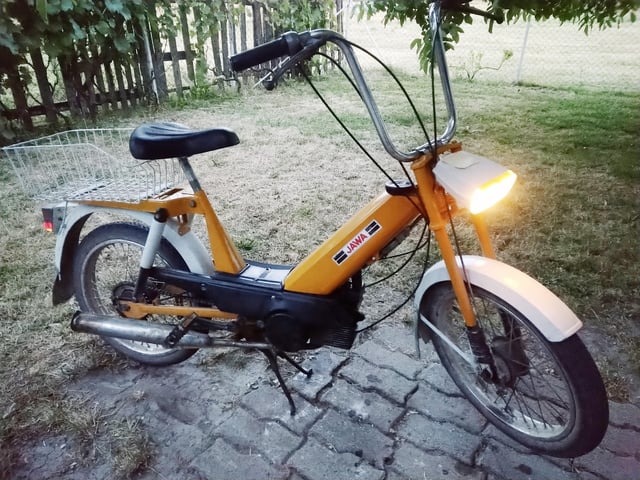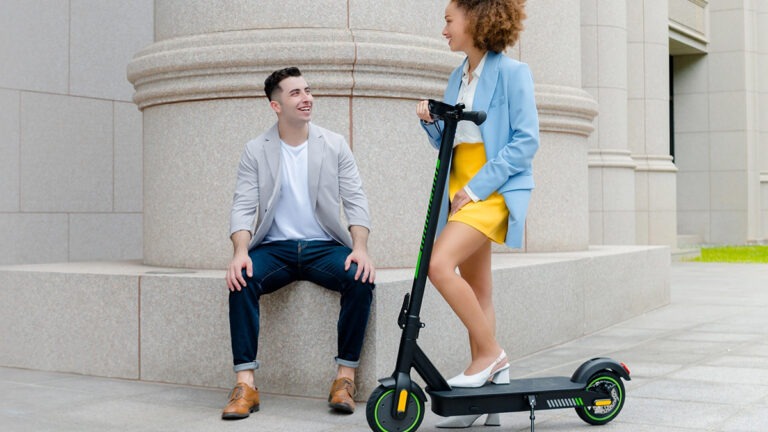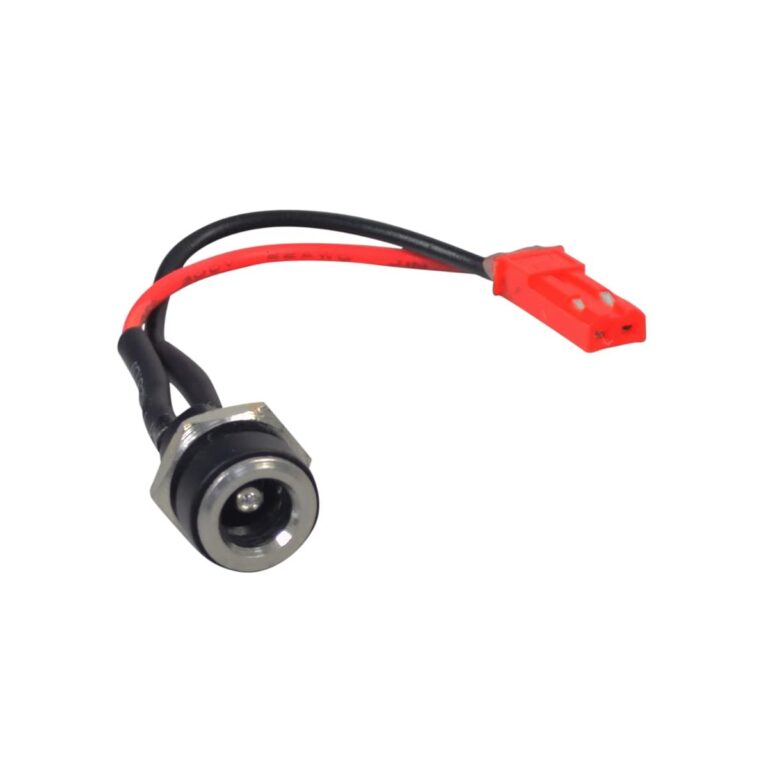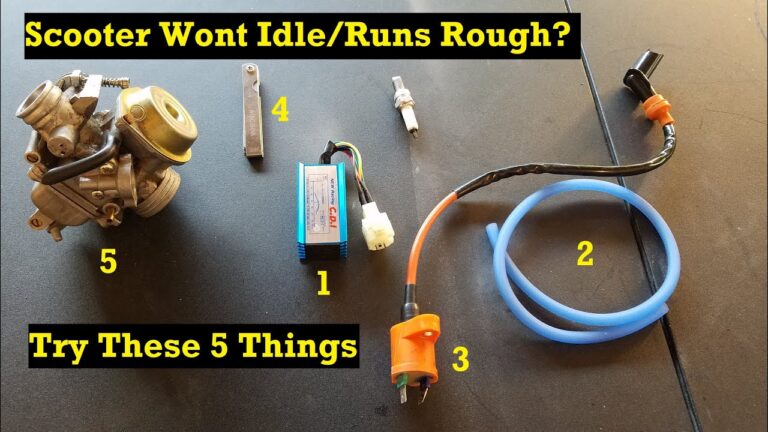Scooter Wont Idle : Discover the Simple Fixes

If your scooter won’t idle, check the carburetor for clogs and clean it if necessary. A malfunctioning carburetor is a common cause of idling issues in scooters.
When the carburetor gets clogged, it restricts the flow of fuel, making it difficult for the engine to maintain a steady idle speed. By cleaning the carburetor, you can remove any dirt or debris that may be causing the clog and restore proper fuel flow to the engine.
This will help your scooter idle smoothly again and prevent further issues.
Signs Of A Scooter That Won’T Idle Properly
If your scooter won’t idle properly, it might be a sign of underlying issues. Look out for symptoms like a fluctuating idle speed, stalling, or rough idling, as these could indicate a problem with the carburetor, fuel system, or spark plug.
Proper diagnosis and maintenance can help resolve the issue and keep your scooter running smoothly.
If you own a scooter, you know that the idle function plays a crucial role in its performance. A scooter that won’t idle properly can be frustrating and may indicate an underlying issue. To help you diagnose and fix the problem, here are some common signs to look out for:
Symptoms Of An Idling Problem:
- Uneven idling: When your scooter’s engine struggles to maintain a steady idle speed, fluctuating between high and low RPMs, it is a clear indication of an idling problem.
- Stalling: If your scooter frequently stalls immediately after starting or when you come to a stop, it may indicate a faulty idle function.
- Rough idle: Noticeable vibrations or a rough sensation coming from your scooter’s engine when it is idling can signify an issue with the idle control system.
- Excessive fuel consumption: An incorrectly calibrated or malfunctioning idle system can lead to increased fuel consumption, draining your scooter’s gas tank faster than usual.
- Difficulty starting: A scooter with an idling problem may have trouble starting, requiring multiple attempts or prolonged cranking before it fires up.
- Abnormal noise: Unusual sounds like knocking, rattling, or hissing coming from the engine while idling can point towards an issue affecting the idle function.
- Foul odors: If your scooter emits unusual smells like burning fuel or strong exhaust fumes while idling, it could indicate an idling problem.
Now that you are aware of the signs of a scooter that won’t idle properly, it’s essential to understand the underlying causes behind these issues. Identifying the root cause will help you effectively troubleshoot and resolve the idling problem.
Common Causes Of Scooters Not Idling
Scooters not idling can be caused by a variety of factors, including dirty carburetors, clogged fuel lines, or faulty spark plugs. These issues require careful inspection and maintenance to ensure proper scooter performance.
Is your scooter having trouble idling? Don’t worry, we’ve got you covered! In this section, we’ll explore some common causes of scooters not idling and provide you with some valuable insights to help you troubleshoot the issue. Let’s dive right in!
Fuel-Related Issues
Fuel is the lifeblood of any scooter engine. When it comes to idle problems, fuel-related issues are often the culprits. Here are some potential causes to keep in mind:
- Clogged fuel filter: A clogged filter can obstruct the fuel flow, leading to a rough or unstable idle. Consider checking and cleaning or replacing the fuel filter if necessary.
- Dirty fuel tank: Sediment or debris in the fuel tank can also affect the proper flow of fuel. Regularly inspect and clean the fuel tank to avoid any potential idling problems.
- Old or contaminated fuel: If your scooter has been sitting idle for an extended period or you’ve recently filled it with low-quality or contaminated fuel, it may affect its idling performance. Drain the old fuel and refill with fresh, clean fuel to rule out this possibility.
- Fuel line issues: Damaged or blocked fuel lines can disrupt the fuel supply to the engine, resulting in idling issues. Inspect the fuel lines for any leaks, cracks, or blockages, and address the problem accordingly.
Ignition System Problems
The ignition system plays a crucial role in starting and idling your scooter. If there are issues with the ignition system, your scooter may struggle to idle properly. Consider the following possibilities:
- Faulty spark plug: A worn-out or malfunctioning spark plug can lead to irregular idling or even stalling. Check the spark plug’s condition and replace it if necessary.
- Ignition coil problems: A faulty ignition coil can cause a weak spark, leading to poor idling performance. Inspect the ignition coil and ensure it’s functioning correctly.
- Electrical connection issues: Loose or corroded electrical connections within the ignition system can disrupt the flow of electricity, resulting in idling problems. Check all connections and clean or tighten them as needed.
Carburetor Or Air Intake Issues
The carburetor and air intake system are responsible for mixing the fuel and air in the correct ratio for your scooter to run smoothly. Any problems in these components can affect the idling performance. Consider the following factors:
- Dirty carburetor: A dirty or clogged carburetor can disrupt the fuel and air mixture, causing erratic idling. Clean the carburetor thoroughly or have it professionally serviced.
- Idle adjustment screw: Incorrect adjustment of the idle screw can lead to idling problems. Ensure the idle screw is set to the manufacturer’s recommended specifications.
- Air leaks: Any air leaks in the carburetor or intake manifold can affect the air/fuel mixture, resulting in poor idle. Check for any leaks and repair or replace any faulty components.
Remember, troubleshooting idling issues may require some mechanical knowledge or assistance from a professional. However, with this understanding of common causes, you can provide useful information to your mechanic, helping them diagnose and address the problem efficiently. Happy scooting!
Troubleshooting Techniques To Fix Idle Problems
Having trouble with your scooter not idling? Check out these troubleshooting techniques to get your scooter running smoothly again. Just a few simple steps can help diagnose and fix the idle problem, saving you time and money in the long run.
Is your scooter having trouble idling smoothly? Don’t worry, we’ve got you covered! Identifying the underlying issues can be a bit tricky, but with these troubleshooting techniques, you’ll be able to diagnose and fix the problem like a pro. Let’s dive right in:
Checking The Fuel System
To ensure a smooth idle, it’s essential to inspect the fuel system. Here’s what you need to do:
- Inspecting fuel lines and filters: Start by examining the fuel lines for any blockages or leaks. Replace them if necessary. Additionally, check the fuel filters for clogs, as they can prevent proper fuel flow.
- Examining the fuel pump: A malfunctioning fuel pump can disrupt the idling process. Check if the pump is delivering the correct fuel pressure. If not, it may need to be cleaned or replaced.
Testing The Ignition System
A faulty ignition system can also contribute to idle problems. Follow these steps to identify any issues:
- Inspecting spark plugs and wires: Check the spark plugs for signs of wear or damage. Replace them if necessary. Additionally, inspect the wires for any cracks or breaks, as they can cause misfires.
- Checking the ignition coil: A faulty ignition coil can disrupt the spark distribution, affecting idle performance. Test the coil with a multimeter to verify its functionality.
Diagnosing Carburetor Or Air Intake Issues
A malfunctioning carburetor or air intake system can greatly impact idle performance. Here’s what you should do:
- Cleaning the carburetor: Over time, the carburetor can accumulate dirt and debris, leading to poor idle quality. Clean the carburetor thoroughly to remove any clogs or build-up.
- Adjusting the idle speed screw: Sometimes, minor adjustments to the idle speed screw can make a significant difference. Ensure that the idle speed is set to the manufacturer’s specifications.
By going through these troubleshooting techniques, you’ll be able to pinpoint and resolve the issues affecting your scooter’s idle performance. Remember to follow the manufacturer’s guidelines and seek professional help if needed. Get your scooter back on track and enjoy a smooth idle once again!

Credit: www.youtube.com
Step-By-Step Guide To Fixing Scooter Idle Problems
Having trouble with your scooter not idling? We’ve got you covered with this step-by-step guide to fixing idle problems. With easy-to-follow instructions, you’ll be back on the road in no time.
Step 1: Checking The Fuel System
When your scooter is having idle problems, the first step is to check the fuel system. The fuel system is responsible for delivering the proper amount of fuel to the engine for it to run smoothly at idle. Here’s how you can check the fuel system:
- Inspect the fuel tank: Make sure there is enough fuel in the tank and that it is clean. If the fuel is old or contaminated, it can cause the scooter to have trouble idling.
- Check the fuel filter: The fuel filter prevents any dirt or debris from entering the carburetor or fuel injectors. If the filter is clogged, it can restrict the flow of fuel and affect the scooter’s idle. Replace the filter if necessary.
- Examine the fuel lines: Ensure that the fuel lines are not cracked, leaking, or clogged. Damaged or blocked fuel lines can hinder the proper flow of fuel, leading to idle issues. Replace any damaged lines.
Step 2: Testing The Ignition System
The ignition system plays a crucial role in starting and idling a scooter. If there are issues with the ignition system, it can prevent the scooter from idling properly. Here’s how you can test the ignition system:
- Check the spark plug: A faulty spark plug can cause misfiring or a weak spark, resulting in idle problems. Remove the spark plug and inspect it for any signs of wear, corrosion, or damage. Replace the spark plug if necessary.
- Test the ignition coil: Use an ohmmeter to measure the resistance of the ignition coil. If the resistance is outside the manufacturer’s specifications, it may indicate a faulty coil. In such cases, it’s best to replace the ignition coil.
- Inspect the wiring: Ensure that all the ignition system wiring is properly connected and free from any damage. Loose or damaged wiring can cause intermittent electrical connection issues, affecting the scooter’s idle. Repair or replace any faulty wiring.
Step 3: Diagnosing Carburetor Or Air Intake Issues
The carburetor and air intake system are vital for the proper mixture of fuel and air necessary for the scooter to idle correctly. Here’s how you can diagnose any issues with the carburetor or air intake:
- Clean the carburetor: Over time, the carburetor can accumulate dirt, debris, or varnish, causing it to clog. A clogged carburetor can lead to poor idle quality. Clean the carburetor using a carburetor cleaner and follow the manufacturer’s instructions.
- Adjust the air-fuel mixture: If the air-fuel mixture is too lean or too rich, it can impact the scooter’s idle. Refer to the scooter’s manual for instructions on how to adjust the air-fuel mixture screw. Fine-tune it until the idle becomes smooth.
- Check the air filter: A dirty or clogged air filter can restrict the airflow to the carburetor, affecting the scooter’s idle. Inspect the air filter and clean or replace it if necessary.
Step 4: Adjusting Idle Speed
If you’ve gone through the previous steps and your scooter still won’t idle properly, adjusting the idle speed might be the solution. Here’s how you can adjust the idle speed:
- Locate the idle speed screw: Consult the scooter’s manual to find the idle speed screw. It is usually located near the carburetor or throttle body.
- Start the scooter: Turn on the scooter and let it warm up for a few minutes.
- Turn the screw: Using a screwdriver, turn the idle speed screw clockwise to increase the idle speed or counterclockwise to decrease it. Make small adjustments and test the idle after each adjustment until you find the optimal idle speed.
By following these step-by-step instructions, you can troubleshoot and fix the idle problems with your scooter. Remember to refer to your scooter’s manual for specific instructions and always prioritize safety while working on your scooter.
Professional Help Vs. Diy Troubleshooting
Need help troubleshooting your scooter that won’t idle? Consider professional assistance for reliable solutions instead of attempting DIY fixes that may worsen the problem. Don’t struggle alone, get expert help today.
Many scooter riders experience the frustrating problem of a scooter that won’t idle. This issue can be a result of various factors, from a clogged air filter to a malfunctioning carburetor. When facing idle problems with your scooter, you may wonder whether to seek professional help or attempt to troubleshoot the issue yourself.
Each option has its advantages, so let’s take a closer look at when to seek professional assistance and the benefits of troubleshooting idle problems yourself.
When To Seek Professional Assistance:
- If you lack mechanical knowledge and experience, it may be best to seek professional help. Mechanics have the expertise to accurately diagnose and fix idle problems efficiently.
- When multiple attempts at DIY troubleshooting have failed, it’s time to call in the professionals. Sometimes, complex idle issues require advanced knowledge and specialized tools that only trained mechanics possess.
- If your scooter is still under warranty, it’s recommended to have it serviced by authorized professionals. Attempting to fix the problem yourself might void the warranty.
Benefits Of Troubleshooting Idle Problems Yourself:
- Cost-saving: DIY troubleshooting can save you money as you won’t need to pay for professional labor charges. By identifying and fixing the issue yourself, you can avoid unnecessary expenses.
- Learning opportunity: Troubleshooting idle problems on your scooter can provide valuable insights into its mechanics. It allows you to learn more about your vehicle and potentially handle future issues with confidence.
- Time flexibility: By troubleshooting the issue yourself, you can work at your own pace and schedule. This flexibility is beneficial for individuals who have time constraints, allowing them to work on their scooter when convenient.
Remember, attempting to troubleshoot idle problems yourself should only be done if you have the necessary knowledge, tools, and confidence. If you are unsure or encountering difficulties during the process, seeking professional assistance is always a wise decision.
Preventative Measures To Avoid Idle Issues In Scooters
To prevent idle issues in scooters, it’s vital to maintain regular maintenance checks, including cleaning the carburetor, checking spark plugs, and ensuring the fuel mixtures are correct. Proper storage and using high-quality fuel can also help prevent scooter idle problems.
Scooter owners know how frustrating it can be when their ride won’t idle properly. Luckily, there are several preventative measures you can take to avoid idle issues and keep your scooter running smoothly. By following these simple steps, you can ensure that your scooter stays in top condition for longer.
Let’s take a closer look at some effective preventative measures.
Regular Maintenance And Servicing
Regular maintenance and servicing play a crucial role in preventing idle issues in scooters. By adhering to a proper maintenance schedule, you can catch potential issues before they become major problems. Here are some key steps to include in your maintenance routine:
- Regularly clean and replace the air filter: A clean air filter promotes proper air intake and can prevent idle issues caused by restricted airflow.
- Check the spark plug: Ensure that the spark plug is clean and properly gapped. A faulty spark plug can result in poor combustion and unstable idling.
- Monitor fuel lines and vacuum hoses: Regularly inspect these components for cracks or leaks, as they can disrupt the fuel delivery system and affect idling.
- Clean the carburetor: Over time, the carburetor can accumulate dirt and debris, leading to clogged jets and poor idling. Cleaning it periodically can help restore smooth idling performance.
- Adjust idle speed: Follow the manufacturer’s guidelines to adjust the idle speed correctly. An incorrect idle speed can lead to stalling or rough idling.
Regular maintenance and servicing not only prevent idle issues but also contribute to the overall longevity of your scooter.
Using High-Quality Fuel And Additives
The fuel you use can significantly impact the performance and idle quality of your scooter. To avoid idle issues, make sure to:
- Use high-quality fuel: Opt for reputable gas stations and choose fuel with the recommended octane rating for your scooter. Low-quality fuel can lead to engine deposits, affecting idle performance.
- Avoid fuel contamination: Contaminated fuel, such as stale or water-contaminated fuel, can cause idling problems. Ensure that you only fill up from trusted sources.
- Consider fuel additives: Some fuel additives can help keep your fuel system clean and improve idle quality. They can prevent fuel deposits and ensure smooth combustion.
By using high-quality fuel and considering fuel additives, you can significantly reduce the chances of idling issues and maintain optimal performance in your scooter.
Proper Storage Practices
Properly storing your scooter when not in use is crucial for its overall condition, including idle performance. Here are some essential storage practices to follow:
- Store in a dry and covered area: Exposure to moisture and the elements can lead to corrosion and damage sensitive components. Storing your scooter indoors or using a weatherproof cover can prevent potential idle issues.
- Use a fuel stabilizer: When storing your scooter for an extended period, consider adding a fuel stabilizer to the tank. This will help prevent fuel degradation and maintain proper idle performance.
- Maintain the battery: If your scooter has a battery, make sure it’s properly charged and removed during long periods of storage. A dead or weak battery can result in poor idling and starting difficulties.
By adhering to proper storage practices, you can avoid idle issues caused by poor storage conditions and ensure that your scooter is ready to hit the road whenever you need it.
Remember, taking preventative measures and following these simple steps can go a long way in preventing idle issues in your scooter. By making regular maintenance, choosing quality fuel, and practicing proper storage, you can enjoy a smooth and trouble-free riding experience.
Keep these tips in mind and keep your scooter running at its best!
Frequently Asked Questions Of Scooter Wont Idle
Why Does My Scooter Shut Off When Idle?
There are several possible reasons why your scooter shuts off when idle. It could be due to a clogged air filter, a dirty carburetor, or a faulty spark plug. Another possibility is a problem with the fuel system, such as a clogged fuel line or a fuel pump malfunction.
Regular maintenance and inspection can help identify and fix the issue.
Why Is My Scooter Over Revving?
Your scooter may be over revving due to issues such as a stuck throttle, worn clutch, or improper carburetor adjustments.
Why Is My Moped Starting But Not Moving?
A moped may start but not move due to issues with the drive belt, clutch, transmission, or engine.
Why Does My Scooter Accelerate But Not Move?
Your scooter may accelerate but not move due to issues with the drive belt, clutch, or transmission.
Conclusion
To summarize, addressing an idle issue with your scooter is essential for maintaining its functionality and preserving its lifespan. It is vital to identify potential causes such as clogged fuel lines, dirty air filters, or malfunctioning spark plugs. Regular preventive maintenance, including cleaning and adjusting parts, can go a long way in preventing idle problems.
DIY troubleshooting steps like cleaning the carburetor, replacing damaged components, and checking for any loose connections are easy fixes that can be done at home. However, it is crucial to consult a professional if the problem persists or if you are unsure about handling the repairs yourself.
Remember, taking prompt action and resolving idle issues promptly not only ensures a smoother ride but also helps avoid costly repairs down the line. So, stay proactive, keep an eye on your scooter’s idle performance, and enjoy the open road hassle-free.





